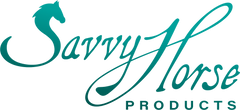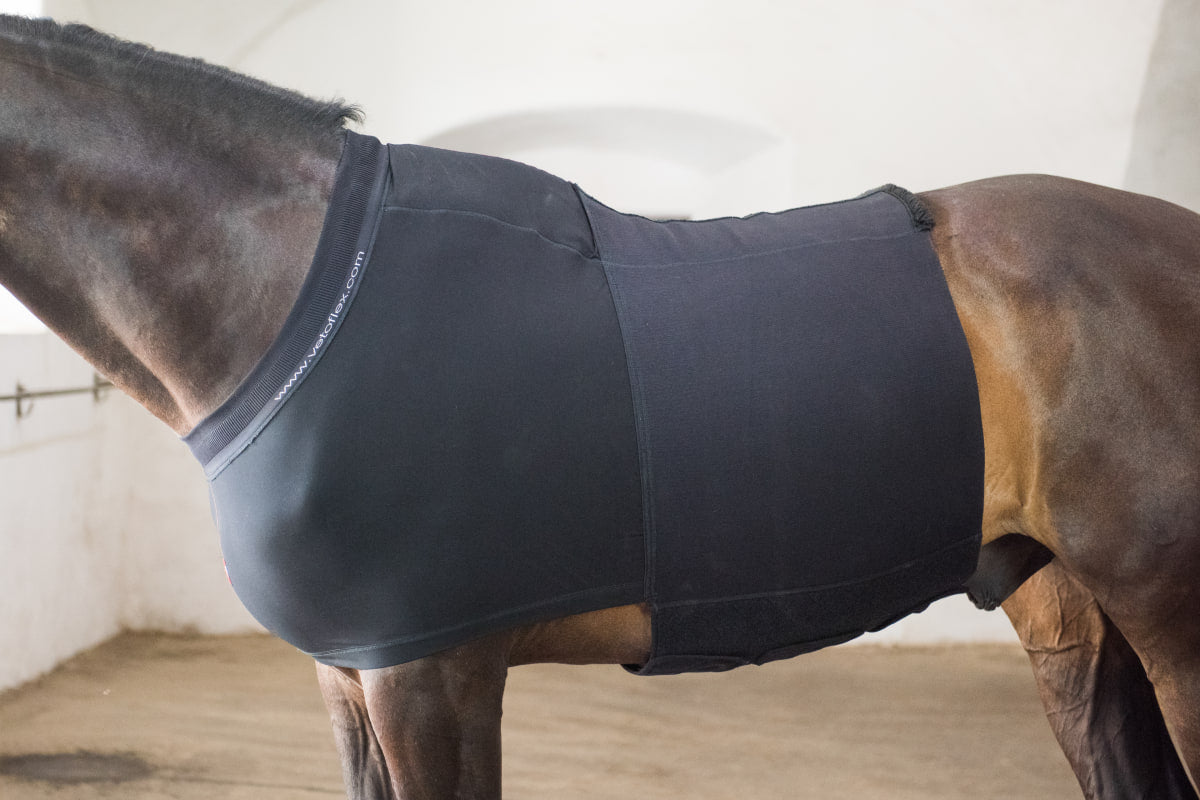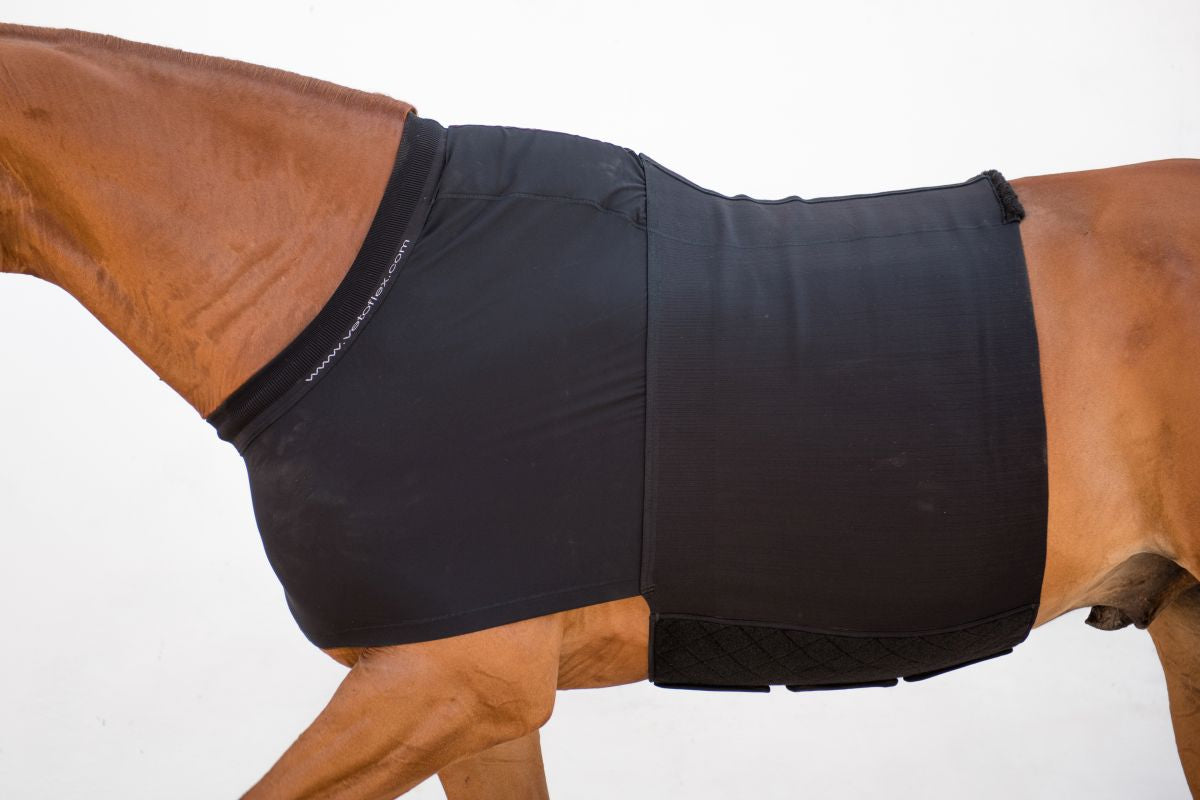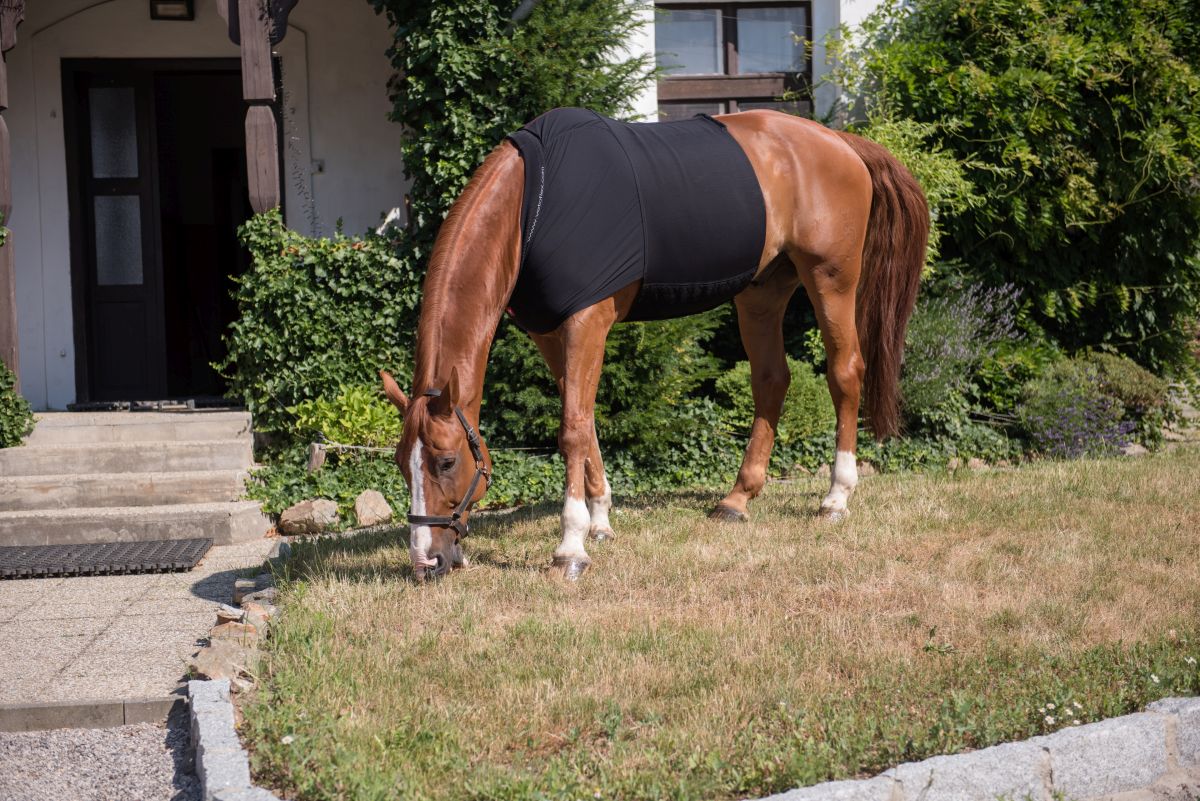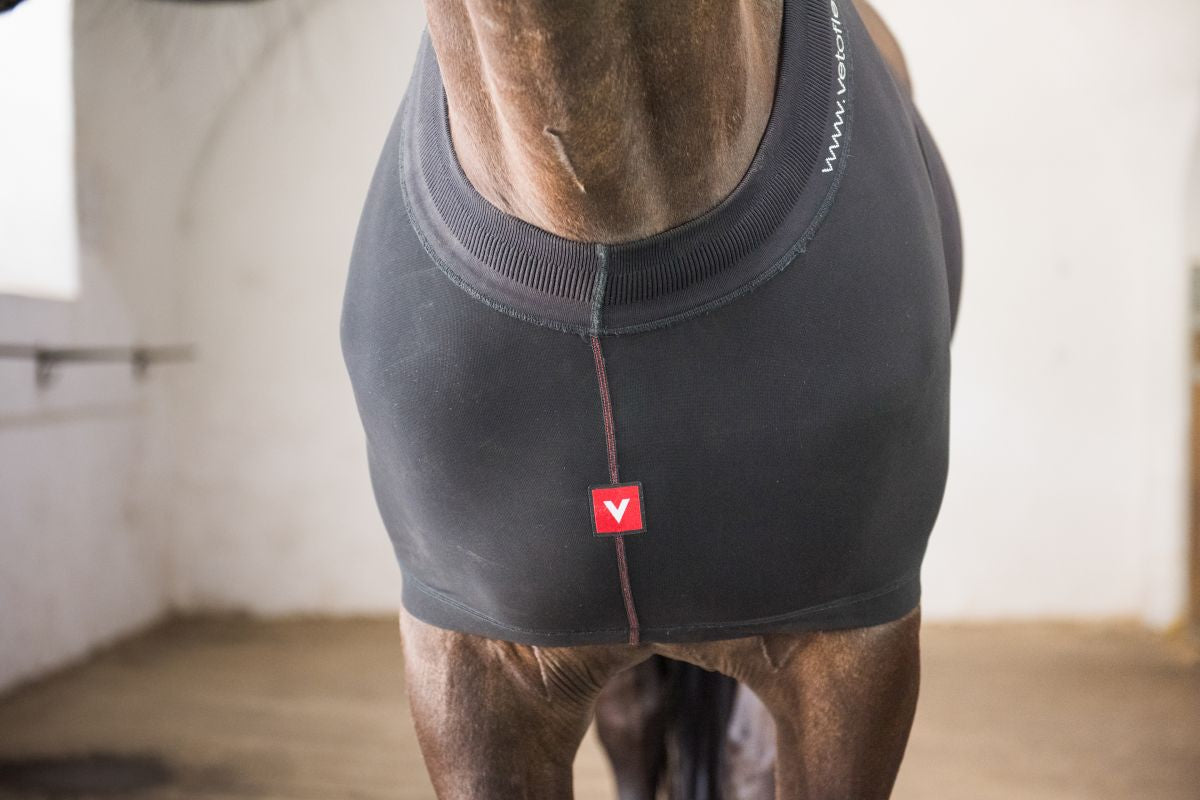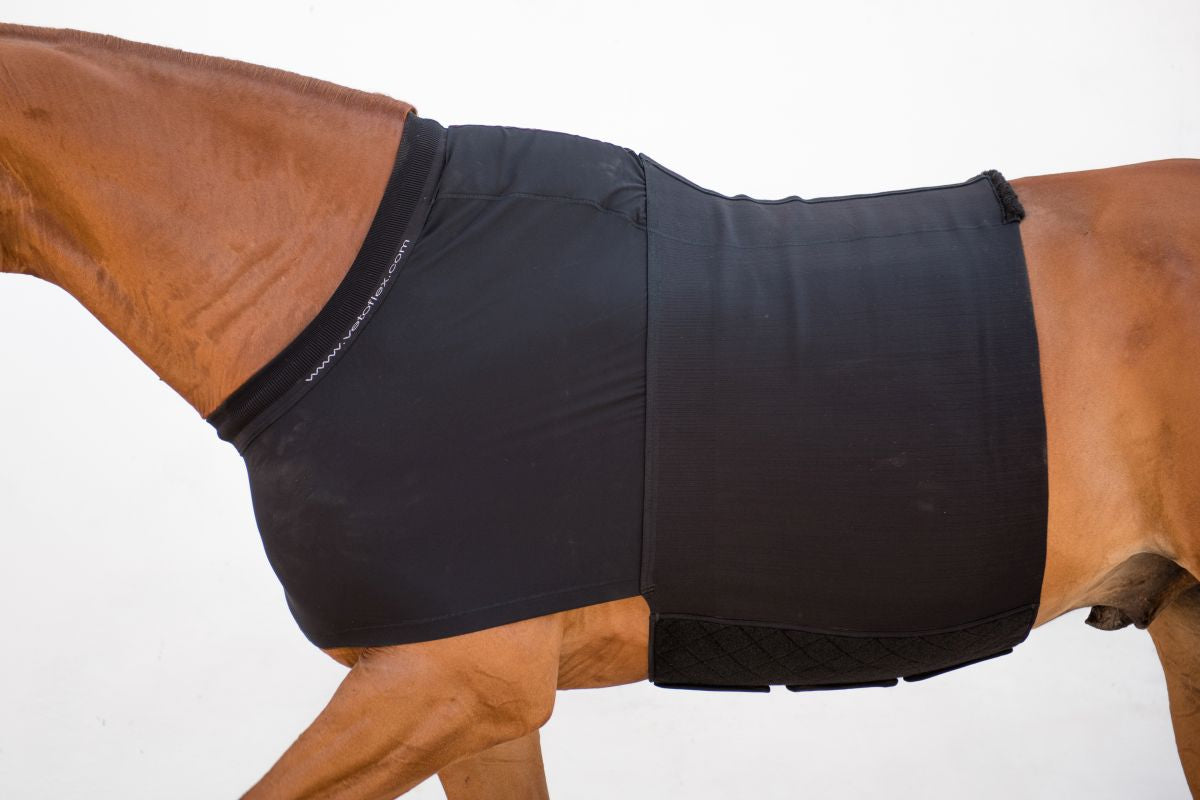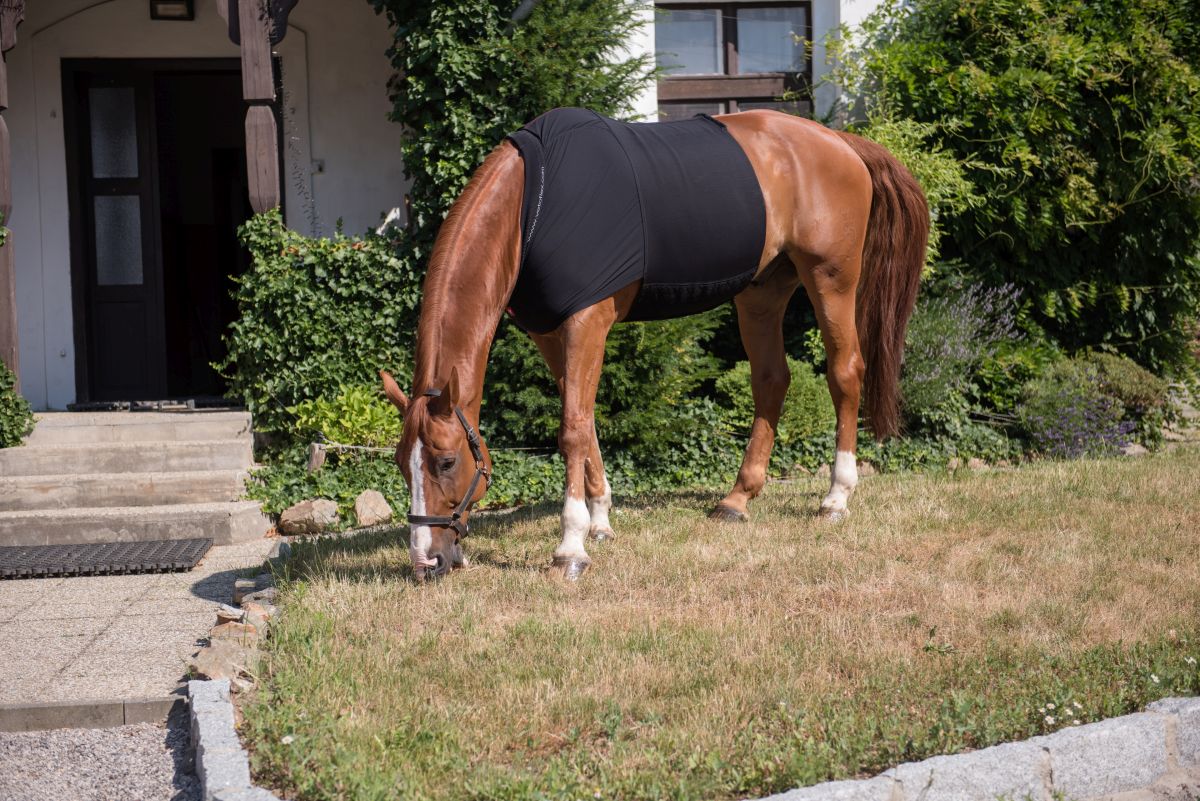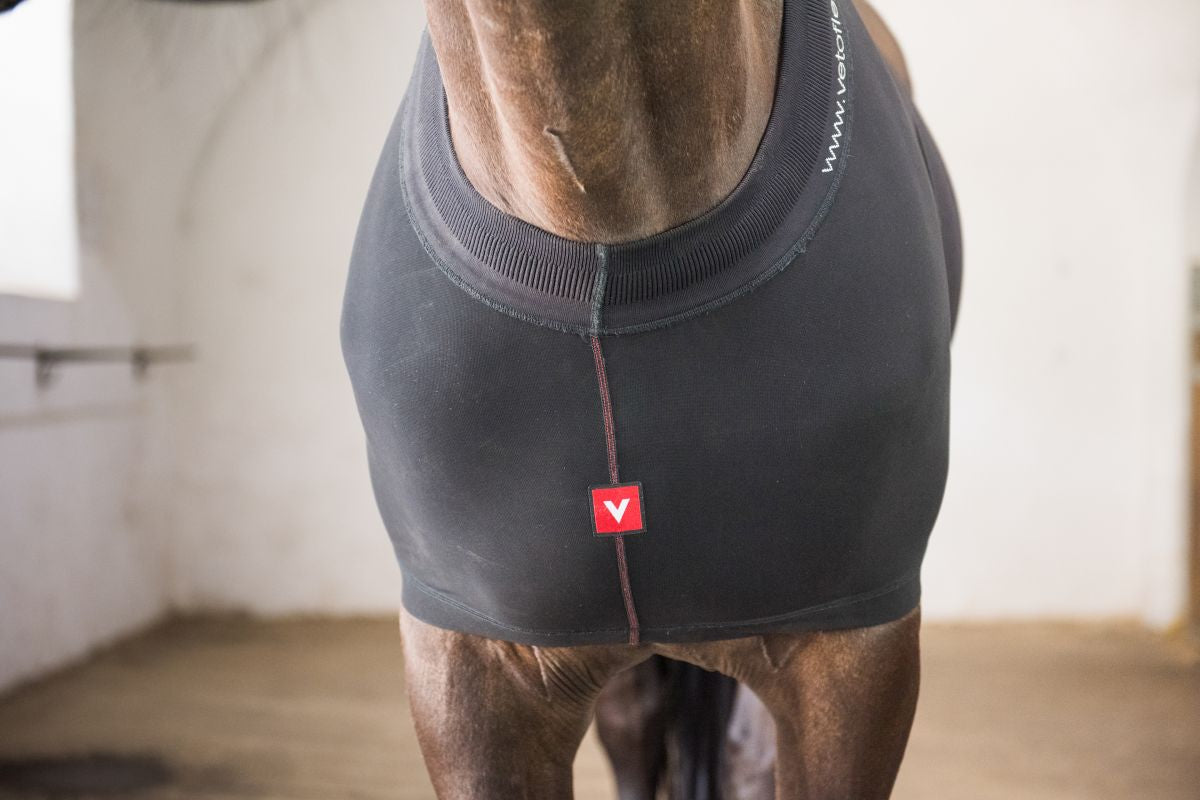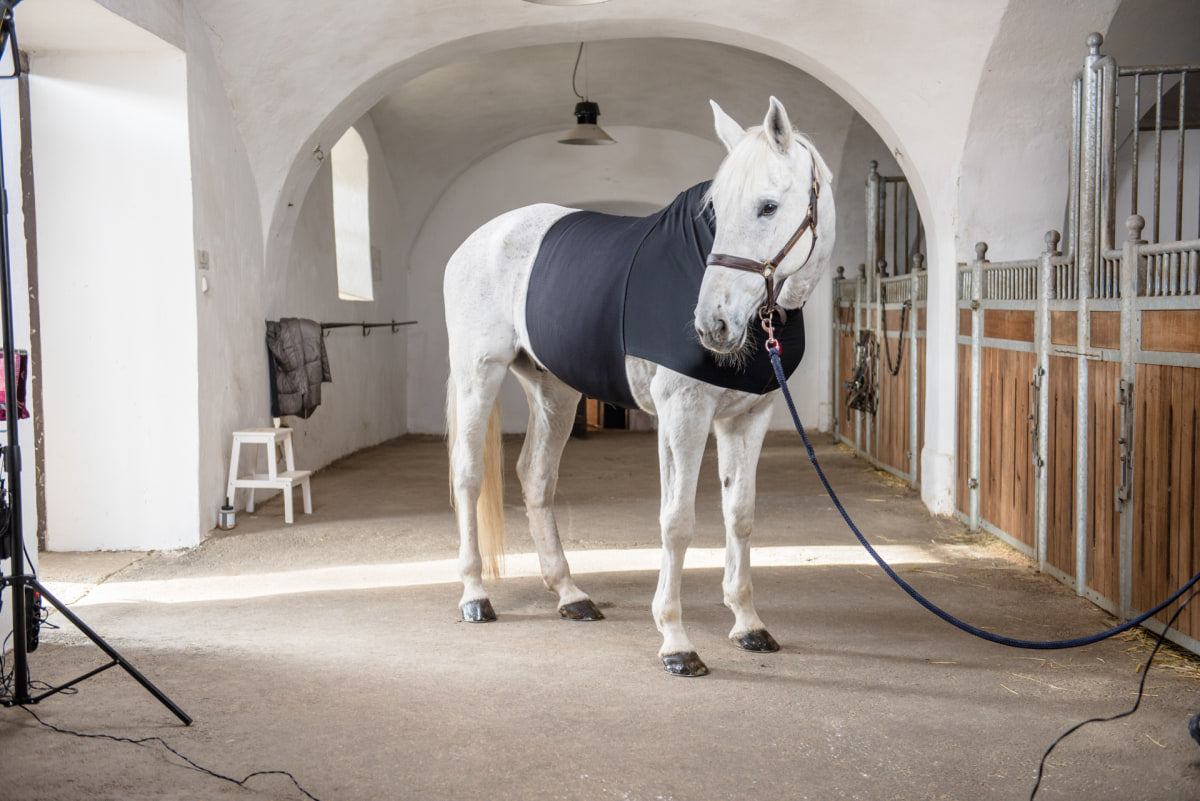December Only: Savvy Feeder • Vetoflex • RYDE - FREE Ground Shipping
Free Ground Shipping through December 31 — First Time Ever.
VETOFLEX Recovery Hernia Belt Stable
VETOFLEX Recovery Hernia Belt Stable
$898.00
Shipping
+
Shipping
+
We use Fed Ex delivery services. It typically takes 4-10 business days for your order to arrive.
Call us at 937-RU-SAVVY (937-787-2889) or email Lenny@SavvyHorseProducts.com for shipping quotes outside the continental US or to have your delivery held at your local Fed Ex location.
- Overnight shipping available. Select at checkout, we will invoice for the exact shipping cost.
- Strengthens the abdominal wall.
- Prevents the formation of soft tissue swelling around the wound.
- Distributes the point pressure of the hernia to the whole belly area.
- Fully breathable, easy to maintain clean and disinfect.

Download Our Free
VetoFlex Guide
This free downloadable guide offers in-depth insight backed by veterinary research and real-world clinical use. Inside, you’ll learn how VETOFLEX compression belts and bandages are designed to protect surgical sites, support the abdominal wall, improve circulation, and reduce post-operative complications, with detailed explanations of each product’s purpose and application.
VETOFLEX RECOVERY BELT: HERNIA
This belt is designed for horses prone to hernia injuries. Unlike the Colic Recovery Belt, the hernia belt has a pocket for a special breathable foam pad under the horse‘s belly. This recovery belt provides maximum support to the patient’s abdominal walls. The special foam pad distributes pressure and heaviness across its surface. It also helps retract and fill the newly open space in the stomach wall. Meanwhile, the belt also strengthens the abdominal wall and prevents the formation of soft tissue edema. All Vetoflex belts have an anatomic shape, are breathable, and have a pliable soft collar and a padded spine making them safe and comfortable for 24/7 use. We recommend using the belt 3 to 4 months after surgery. In the case of pregnant mares, it is recommended to use it until the birth.
Sizes: EXTRA FULL, FULL, COB. Custom sizing is available for horses of nonstandard sizes.
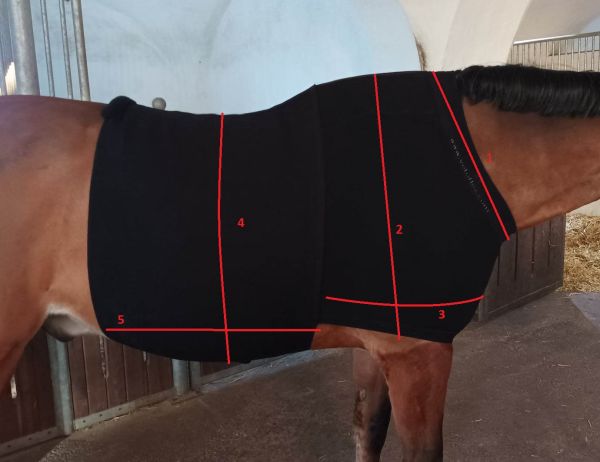
How to pick a recovery belt?
Please measure your horse according to the videos below because the sizes differ in waist circumference and vest size. Your measurements will determine if your horse needs a COB, FULL or EXTRA FULL.
If necessary, custom sizing is available for an additional charge of 30%.
How To Measure Your Horse for a Hernia Stable Belt
Sizes
Recommendation: When you are measuring on the border of sizes, it is always advisable to lean towards the smaller circumference.

First time Putting on a Hernia Stable Belt
More Information
Description
+
Description
+
PROPERTIES
Reconvalescent, or recovery abdominal belts were developed in cooperation with the Faculty of Veterinary Medicine, Clinic of Horse Diseases in Brno, Czech Republic.
The use of Vetoflex post-operative belts is immensely beneficial for horse's recovery and subsequent return to sport. The belts significantly facilitate patient care by protecting the wound in the challenging barn environment with its omnipresent dust and insects and they strengthen the abdominal wall and prevent the formation of edema of soft tissues around the wound. Recovery belts are comfortable for the horse to wear 24/7 because of their anatomical shape, soft and the materials used are fully breathable. The belts are easily washed in a regular washing machine and even withstand high temperatures and frequent disinfectant use.
Recommendation:
We recommend using the Recovery Belt - Stable for 2 to 3 months after the operation; in the case of pregnant mares, we use the belt until, during, and after delivery.
Belts are produced in various standardized sizes such as EXTRA FULL, FULL, and COB. Pony and Foal options are available upon request
We offer both belts in stable and riding variant.
When the horse is ready to return to work, we recommend using the Riding Recovery Belt.
Usage
+
Usage
+
It facilitates work with the horse in the stable after hernia surgery, or with post-operative complications associated with the possibility of a hernia.
In addition, compared to the recovery colic belt, the belt has a pocket for a special breathable foam in the abdominal area, which distributes point pressure and the weight of the growing hernia to the area. It helps to retract and fill the hole for the emerging hernia.
It also has a protective function in the demanding stable environment. It prevents the omnipresent dust and intrusive insects from penetrating the wound.
The compressive function strengthens the abdominal wall and prevents the formation of edema of soft tissues around the wound. The anatomical shape of the bandage represents comfort for the horse when worn 24/7. The bandage is comfortable for the horse, soft and the materials used are fully breathable.
Use is recommended for 2 to 3 months after surgery and you can gradually transition to using a recovery hernia or colic riding belt.
Our offer for stable belt owners: When you buy this belt, you get a 20% discount on a follow-up recovery hernia or colic riding belt, which is allowed to be used at races.
INSTRUCTIONS FOR USE
- Before putting on the belt, unfasten the Velcro and fold the shoulder part of the belt like an accordion.
- Pull the prepared belt over the horse's head and neck.
- Then start adjusting the belt on the shoulders, withers and gradually back down the spine.
- Check that the belt is taut to its maximum length to the hips.
- We recommend 2 people to fasten the belt under the horse's belly, so that the belt does not shift and the position of the belt on the spine is not tilted. Tighten the belt gradually.
- Velcro hooks should never touch the horse's skin.
- Double check the tightness of the safety belt.
Product Care
+
Product Care
+
- The protective belt is machine washable at 60C, ideally using a soap solution and gentle washing cycle.
- Do not use bleaching agents. It is also not recommended to use fabric conditioners as they can create a film on the yarn preventing direct contact between the product surface and skin.
- Wash with all fastenings done, including all Velcros, to prevent possible damage to the fabric.
- Do not leave to dry in direct sunlight or near a source of heat.
- Avoid contact with organic solvents, oils, fats and salves.
- Protect the product from damage by sharp items.
You may also like
Get In Touch
Email us anytime at
Lenny@savvyhorseproducts.com
Or call us at 937-RU-SAVVY (937-787-2889)

